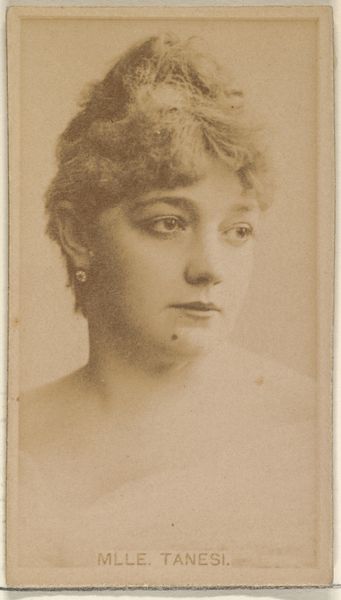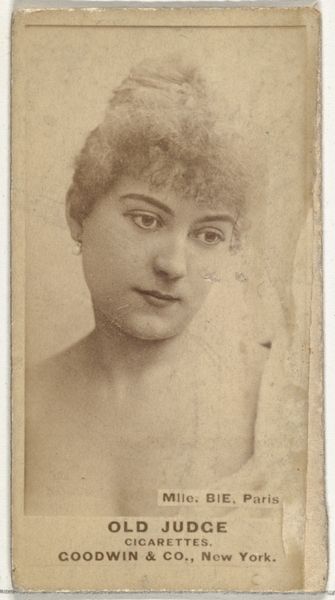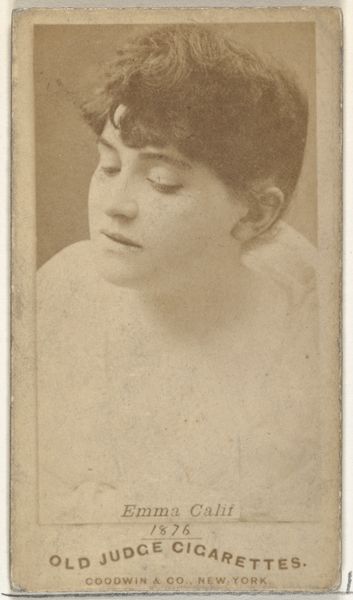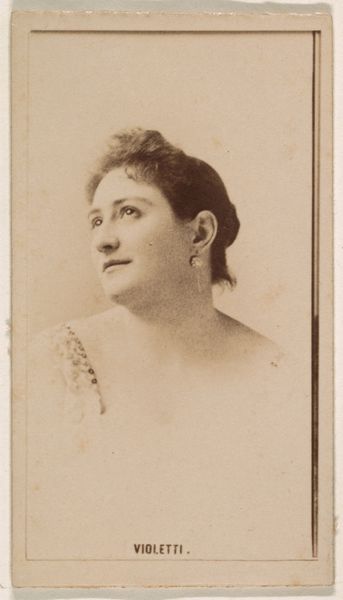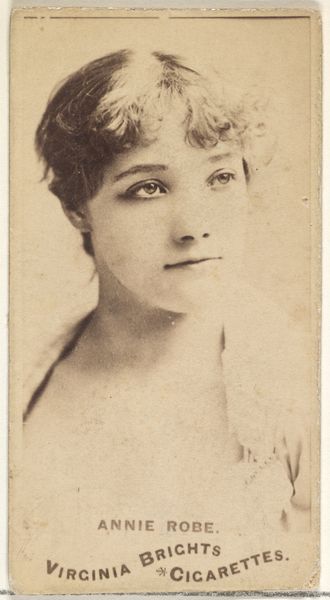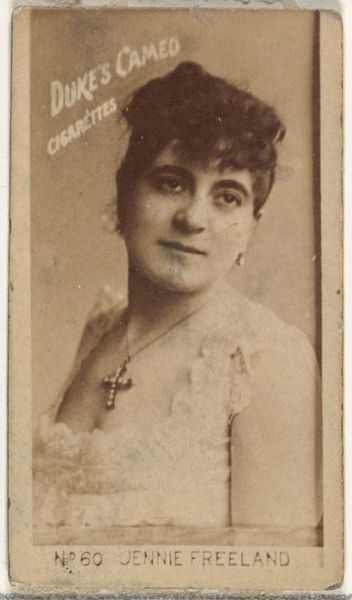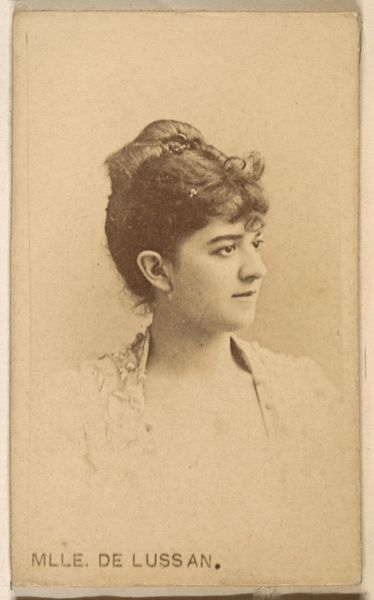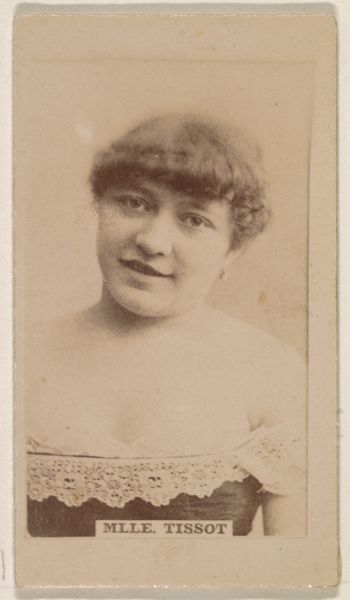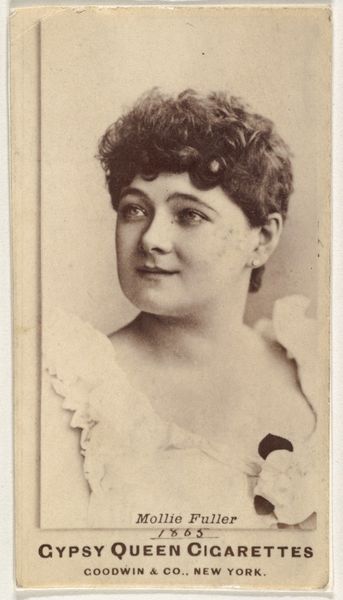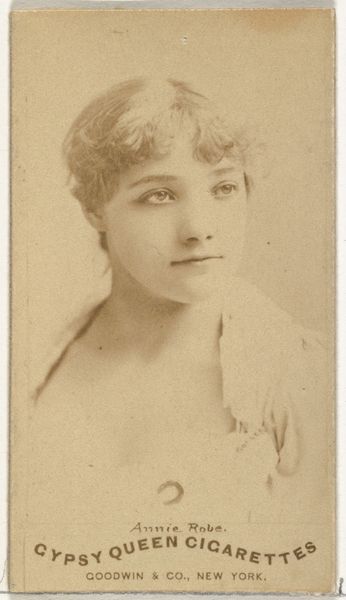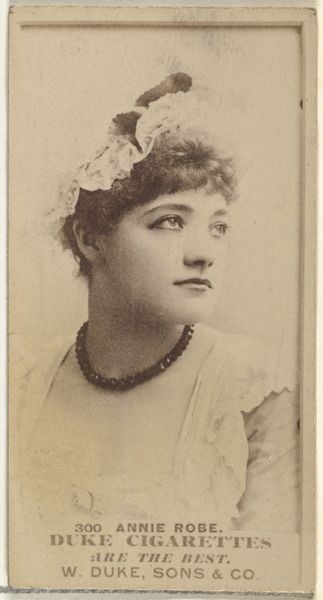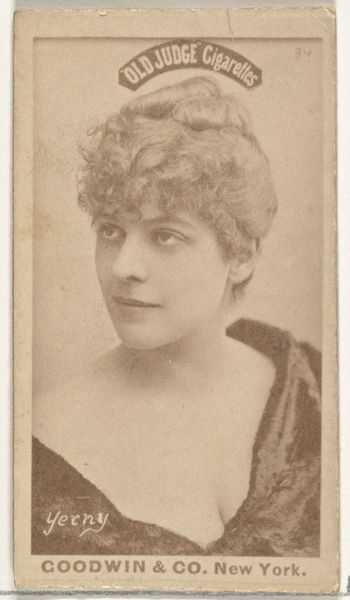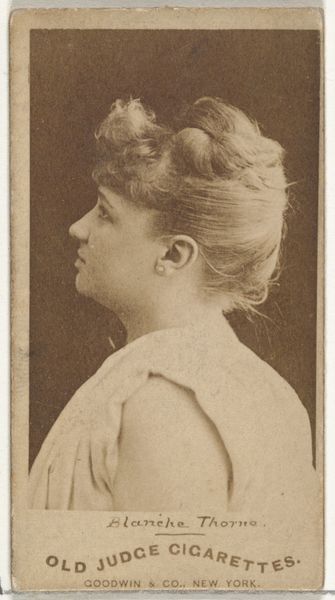
Card Number 562, Amy Gordon, from the Actors and Actresses series (N145-7) issued by Duke Sons & Co. to promote Duke Cigarettes 1880s
0:00
0:00
drawing, print
#
portrait
#
pencil drawn
#
photo of handprinted image
#
drawing
#
toned paper
# print
#
pencil sketch
#
charcoal drawing
#
charcoal art
#
pencil drawing
#
coloured pencil
#
men
#
watercolour illustration
#
watercolor
Dimensions: Sheet: 2 11/16 × 1 3/8 in. (6.8 × 3.5 cm)
Copyright: Public Domain
Curator: This portrait of Amy Gordon, "Card Number 562," was actually a commercial print made in the 1880s by Duke Sons & Co. to promote their cigarettes. What strikes you most about this piece? Editor: I think it's interesting that the portrait of an actress was used to sell cigarettes! The image itself seems like a fairly standard portrait; drawing or print... on a small card format. How does this function as art? Curator: Precisely. It pushes us to consider how value is constructed. Here, an actress’s likeness, a commodity in itself, becomes further enmeshed in the circuits of production and consumption. This card was churned out en masse. Look closely: the textures and the printing techniques tell a story of industrial labor, don't they? The materials themselves, the card stock, the inks, reflect the economics of popular culture. Editor: So it’s less about Amy Gordon the person and more about the mechanics of image-making and distribution at that time? Curator: Absolutely. The image’s value isn’t solely aesthetic, it's rooted in its role within the burgeoning consumer culture. The Duke company isn’t just selling cigarettes; they’re selling aspiration, associating their product with celebrity. The materiality and accessibility of these cards democratized art. Where might one normally see a portrait like this, and whom would it serve? Editor: I see... normally it would only be in rich houses. By printing this and including it in a pack of cigarettes, the image becomes part of everyday life. What else can we understand by looking at its production? Curator: Consider the laborers involved in printing these cards, the scale of operation needed to distribute them nationally, and how it fueled a massive advertising industry that normalized smoking. These cards reflect broader shifts in society itself: the rise of consumer culture and the increasing commodification of…everything. Editor: This has changed my perspective quite a lot; seeing art this way as related to process helps it connect more to our world today, doesn’t it? Curator: Indeed! Material analysis urges us to look beyond the surface, and uncover the power structures that shaped this image.
Comments
No comments
Be the first to comment and join the conversation on the ultimate creative platform.
